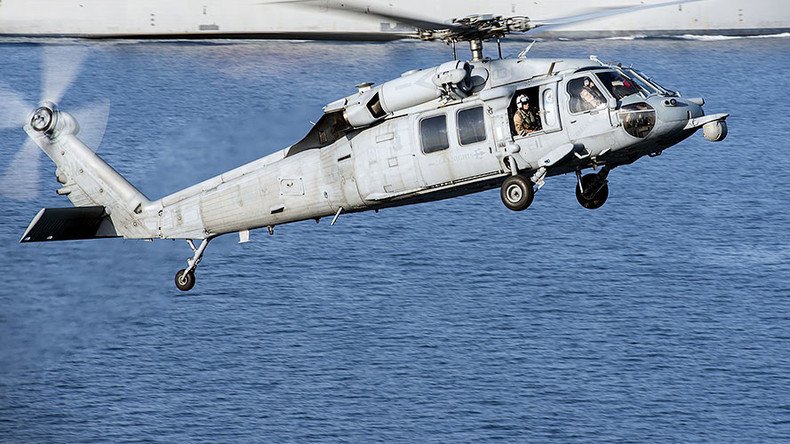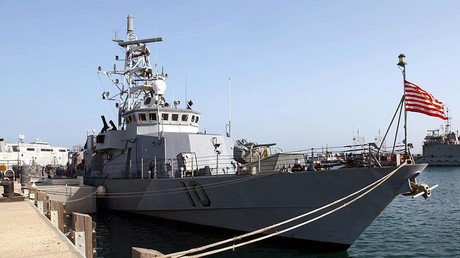Iranian ship aims gun at US Navy helicopter in Strait of Hormuz – Pentagon

A small Iranian vessel pointed a gun at a US Navy helicopter in the Straits of Hormuz, Pentagon officials said. The incident, which took place in international waters, is likely to exacerbate the mutual animosity between the two countries’ militaries.
The encounter took place in the Straits of Hormuz when a US Navy MH-60 helicopter flew within half a mile (0.8km) of two Iranian ships in international waters, two American defense officials told Reuters on Monday.
One of the vessels, which reportedly belongs to Iran’s Islamic Revolutionary Guard, aimed an unknown weapon at the US helicopter. As a rule, fast attack craft and patrol ships are fitted with heavy machine guns or low-caliber cannon.
“The behavior by our standards is provocative and could be seen as an escalation,” the officials said, adding that they consider the act “unsafe and unprofessional.”
Saturday’s incident is the latest in a string of similar maritime encounters that began earlier this year. In September, the USS Firebolt had to change course after a Revolutionary Guard ship sailed directly across its path.
In July, the USS New Orleans and its escort ship, the USS Stout, a guided missile destroyer, were approached by several Iranian vessels whose crews filmed the sailors. The USS New Orleans was carrying about 650 Marines at the time, as well as Army General Joseph Votel, who oversees all American forces in the Middle East.
The most notable incident to date took place in January of this year, when ten US sailors were taken into custody after their boats crossed into Iranian waters. Footage that later went viral showed US sailors kneeling on the deck of the patrol boat with their hands up and, then, seated in a room being given tea, bottled water, and food by the Iranians.
The two vessels were on their way from Kuwait to the US’ naval base in Bahrain. An internal inquiry later revealed that the sailors were not prepared to travel long distances, lacked reliable GPS equipment, and had their engines break down.
The Straits of Hormuz is a narrow maritime route that serves as a gateway to the Persian Gulf. The strait is 21 nautical miles (39km) wide at its narrowest, and is regarded by Iran – which occupies the largest part of the coastline – as critically important to the defense of its shores.
In May, Brigadier General Hossein Salami, the Commander of the Islamic Revolution Guards Corps (IRGC), said on national television that Tehran would be within its rights to defend itself from aggressive US maneuvers in the strait, through which a significant portion of the world’s oil trade is shipped.
‘No Hormuz passage’: Iran's navy highly dangerous to US, top general warns
“We warn the US and its allies against any threatening passage through Hormuz, for if it ever happens, we will have no other choice but act according to the 1982 [UN maritime law] Convention,” he said.
Meanwhile, US President-elect Donald Trump advocated taking a tougher stance on Iran during his election campaign, saying the US Navy must respond to Iranian provocations.
“When they circle our beautiful destroyers with their little boats and they make gestures at our people that they shouldn’t be allowed to make, they will be shot out of the water,” he was quoted by Reuters as saying in September.













